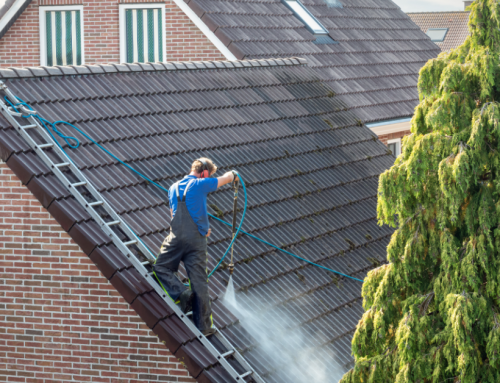Strong winds, heavy rains, scorching sun and massive snowfall – your home’s roof takes a beating 365 days a year.
This year’s spring weather has been particularly damaging to roofs across the country. Hail storms and tornadoes damaged the roofs of two residence halls and the sports coliseum at Jacksonville State University in Alabama, a thunder and hail storm in Sacramento caused leaks and soaked 250 books at the California State Library, and the mid-Atlantic and New England got pummeled by no fewer than four nor’easter snowstorms in less than three weeks.
All of these annual and relentless weather events can leave you with a damaged roof and even cause leaks that can impact your home’s interior.
What storm damage might look like
Sometimes, the signs of a damaged roof are pretty obvious, like water spots on a ceiling or curled, buckling or missing roof shingles. You may also see broken or damaged roof flashing, wet walls, water issues around your home’s exterior, or winter ice damming.
What to look for:
- Shingle condition. Missing shingles are one obvious sign, but pay attention to the granule buildup on your shingles as well as early signs of damage. Hail storms can cause dings and dents in asphalt shingles and should be noted as well.
- Missing flashing along the edges of the roof and along skylights, vents, and chimneys.
- Loose or pealing sealant along those same penetration points.
- Water damage in the attic or along the ceiling.
Other time, the signs aren’t so obvious, which is when it might be time to call in a professional roofing expert. The National Roofing Contractors Association recommends that homeowners get their roof inspected by a professional twice a year—once in the fall and once in the spring.
How to start the process of roof replacement
Once you’ve assessed the damage, the next step to replacing your roof is to request an estimate.
At Long Roofing, an expert will sit down with you and your family to select the perfect roofing materials — from the protective underlayment to the shingles that will cover your whole roof system.
We’ll also work through financing options, discuss warranty packages, and accommodate your schedule to find the perfect day to complete your new roof installation.
What your homeowners insurance covers

Figuring out what your homeowners insurance covers and does not cover can be confusing.
Homeowners insurance covers your roof in cases where it is damaged for reasons outside of the homeowner’s control – a few examples are fire and vandalism. Your policy will also usually cover damage from extreme weather events or “acts of God” like hurricanes and tornadoes. Similarly, roof damage caused by moderate weather incidents such as hail, wind, and rain are often covered by homeowners insurance.
When filing a claim, it’s important to thoroughly document any damage that occurred. Also, make sure you keep receipts for all work done on the home. Many policies will cover these expenses when submitted with a claim.
However, keep in mind that coverage will often depend on the age of your roof, the area you live in, and may other factors. The easiest way to know what’s covered or what’s not when it comes to storm damage is to contact your insurance provider and go over the specifics of your policy, including what’s covered and what your deductible may (or may not) be.
What your warranty looks like
When you purchase a new whole roof system, that roof will come with its own warranty. But not all roof warranties are the same. In fact, many homeowners learn the hard way that most roof warranties only cover the cost of materials or just manufacturer or installation defects—not weather-related issues.
Beware of storm chasers

The last and final point we’ll make about natural disasters is that they can be a magnet for dishonest contractors.
“Unfortunately, severe storms can bring out the worst in people, especially unscrupulous roofing contractors who scam consumers needing to repair or replace their storm-damaged roofs,” the Insurance Institute for Business and Home Safety said after Denver’s record-breaking hail storm in 2017. “These fraudsters will often make false promises, insist on full payment before work begins or is completed. Sometimes, they will even create damage where none existed.”
Do your due diligence when choosing a roofing contractor. Check with local and state agencies to find out if your anticipated contractor is licensed and qualified to do the work.


